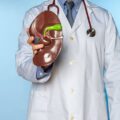COMMENT:
Importantly, no pharmacotherapy has yet been approved for the treatment of NAFLD. Cultivating a comprehensive understanding of its pathophysiology is thus crucial to identify novel therapeutic targets. Hepatic macrophages emerge as one such potential therapeutic target, with recent research highlighting their role in driving NAFLD- and NASH-associated inflammation and metabolic dysregulation.
This review aims to investigate hepatic macrophages’ involvement in the pathogenesis of NAFLD.
KEY LEARNINGS:
In NAFLD livers, Kupffer cells are activated upon ingestion of apoptotic, lipid-rich hepatocytes and free cholesterol. These now activated, enlarged and fat-laden macrophages exhibit impaired lipid metabolism and proinflammatory phenotypes. This triggers the recruitment of monocytes, which differentiate into heterogeneous and predominantly TIM4- macrophage populations with immature proinflammatory and profibrotic phenotypes. As such, subsets of hepatic monocyte-derived macrophage drive NAFLD’s progression into NASH and fibrosis. Simultaneously, lipid-associated macrophages in visceral adipose tissue disrupt metabolic crosstalk, thereby promoting liver inflammation and cardiovascular disease. Future research into hepatic macrophages should seek to identify the specific cellular subsets and inflammatory pathways involved in the pathogenesis of NAFLD and NASH. Developing drug delivery systems capable of harnessing macrophages’ phagocytic activity is also crucial to progressing their therapeutic application.



